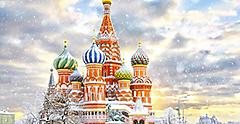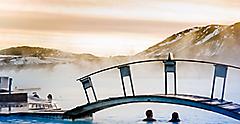
The Inca Empire - How To Get To Machu Picchu
The mountainous regions of Peru were the heartland of the impressive Inca Empire. Some argue that Machu Picchu, a stunning citadel whose true purpose still has archaeologists stumped, is the crown jewel of this ancient civilization. Also confounding is why the archaeological gem was abandoned after only one hundred years of being inhabited. To this day, the former "city" is shrouded in mysteries.

Hiking The Inca Trail To Machu Picchu

Once you reach Machu Picchu, a UNESCO World Heritage Site, you'll notice approximately thirty or so llamas of various colors grazing on the citadel's main terraces. During the Inca empire, llamas were the largest domesticated animals on the continent because horses, donkeys, mules and the like had not yet arrived in South America. This is why they were the go-to animal for moving construction materials, food and anything else the vast empire needed. Commoners used the woolly fibers for clothing, while wool from the llama's camelid relations, the softer alpaca or vicuña, was used by royals. And because llamas are Andean born and bred, they can adapt to most any weather quickly.
Llamas played a big part in building this area's economy, and even today, in villages like Puno and Cusco, llamas are valued, with ponchos and sweaters made from their wool being particularly useful at warding off the cold highland weather.
If you see llamas wandering around Machu Picchu, they're actually the property of the government, as the historical site is a national park. Your best photo opportunity times are early morning, when they head to the terraces to graze, and late afternoon. These are friendly llamas, generally used to being around people, that like to stroll amongst visitors to photo bomb selfies or pose poignantly by the ruins. It's advised you do not feed them, but you are encouraged to say "queso" and snap a post-hike shot with one. It's one of your many rewards for hiking the Inca Trail.
Knowing Your Llama On Your Mountain Hike

Beware The Tail Flick
These woolly creatures are part of the camel family and were used by the Inca as pack animals and as a source of clothing, food, and fuel — and many locals still use them the same way today. These domesticated, highly social animals live in packs of around twenty, led by a single male and six breeding females with their young. If you see one on The Inca Trail to Machu Picchu, know that these are gentle, docile creatures that are generally quite friendly. They're also clever — it's said that they're easier to train than dogs and can repeat a command quickly!
A word of caution, though: beware of a llama that stretches its neck up very straight, holds its head high and starts to flick its tail back and forth quickly. This means that something is upsetting it, and if that happens, it's best to step away. An angry llama is one that can spit, charge, kick or bite anyone or anything (a predator, for example) that it considers threatening or unfriendly.
In the beautiful Spanish colonial Andean city of Cusco, where one often begins their Machu Picchu hiking journey, I once saw a llama react to a testy tourist who wanted his picture taken with the animal in the city's main square. An indigenous woman had bedecked this llama in colorful pom-poms, a specially made decorative saddle and a handwoven head piece. For a small sum, many locals will happily pose with their llama and tourists for that Insta-worthy photo. In this case, however, the tourist wanted to jump on the saddle despite the animal's minder repeatedly telling him to back off. In warning, the llama held its head high and flicked its tail furiously before making humming noises. In a flash, the llama circled the man, heartily spit on him and almost took a bite out of his baseball cap! I could tell a kick was likely next on the agenda. This is one instance where you really need to show respect and heed the minder's advice.
Hiking Trails Through The Andes Mountains

There are various trails you can take while hiking to "The Lost City of the Incas." Some hikes take several days and require you to sleep in tents along the way (no, there are no hotels along the trail), while others are one-day adventures. It's advisable you book a hike with a reputable organization that employs licensed tour guides who know the terrain and its changing weather patterns well. The higher elevations on longer treks (reaching altitudes of 13,800 feet or ca. 4 km) can be quite cold and the air thin, so it can be tough to climb, even for the most experienced hiker. Rest assured, however, there are plenty of alternative trails and other options, depending on your appetite for adventure and trekking prowess. If you're not that into hiking, there are shorter hikes and comfy train rides you can take up to the site — and they're more child-friendly too.
If you're planning a Machu Picchu hiking trip, particularly on the Inca Trail, you'll need to book well in advance because, in order to combat erosion caused by the paths' excessive use, the Peruvian government has capped the number of people on the trails. Each day a maximum of 500 visitors are allowed on the trail (200 are hikers, the rest are guides and porters), each with a government-issued permit that's accompanied by an individual passport (available through a reputable, government-registered tour operator). May to October (the region's dry season) are the most popular months to visit, with spots filling up quickly. The rainy season peaks in February, so try to avoid that month — especially since the Inca Trail is closed for maintenance by the country's government every February.

If you can't make the Inca Trail, alternative treks like the Salkantay, Lares or Inca Jungle Trek can be just as good. If you opt for the four-day Lares Trek, llamas will be completing the hike with you while they transport your gear — just like in the olden days! Llamas are great for this because they can safely carry a quarter of their own body weight, and due to their thick leather soles, they can securely walk on uneven terrain.
When I hiked to Machu Picchu, our group walked the three-day Salkantay Trail, which took us close to the glorious Mount Salkantay, considered the most sacred mountain for the Incas. We hiked through with our aptly named horse, Socorro (or "Help"), past rocky, barren paths down to a subtropical forest, which was much more lush, greener and warmer than where we started. Along the way, we passed through remote tiny villages where locals kept their own llamas and alpacas outside their homes. One friendly villager even offered our group the most amazing freshly picked passion fruit from his own tree. Tropical fruit at the source is next-level delicious.
When the sun goes down in the middle of the Andes, it's literally lights out. Hilariously, our guide somehow took a wrong turn on the first night and we actually got lost for about half an hour while the most inky, all-encompassing darkness — where I couldn't even see my hands in front of my face — greeted us. I didn't panic because after all, I was in Peru. Instead, I looked up and was awed by the amount of stars — shooting and still — that enveloped the sky. I'll never forget that magical moment.

Come For The Llamas, Stay For Machu Picchu's Mysterious History
Once we reached Machu Picchu, I sat high above the city on a terrace taking in the emerald green beauty and watching llamas graze as the early morning sun burned off wisps of fog. I got misty-eyed as I thought about my dad, a history buff who passed away when I was 21, and how much he would have enjoyed learning about the culture of Peru and visiting the over 200 temples and other ancient structures here.
Witnessing llamas roam free in the protected sanctuary of Machu Picchu is an incredible sight to behold and worth the trip alone. But while there, don't miss the Temple of the Sun, the Temple of the Three Windows and the Royal Tomb to learn more about this mysterious city. When Spanish conquistadors came to Machu Picchu, it was abandoned, and most of its temples were emptied. No one knows exactly why Machu Picchu was built — that's part of both its allure and its secretive nature. My dad would have loved that, too.

Get Royal Deals, Sign Up Today

Getting There
Explore Our Most Affordable Itineraries
Explore ancient temples and take a hike with a llama by your side in Machu Picchu on your South America cruise.




